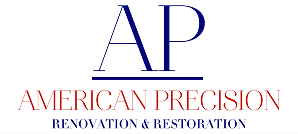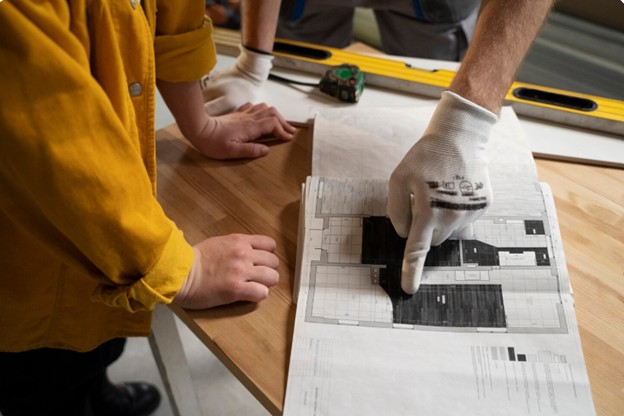Selecting countertop materials is one of the most significant decisions in kitchen remodeling projects. Granite and quartz dominate the premium countertop market, each offering distinct advantages that appeal to different homeowners and design preferences. Knowing the characteristics, costs, and maintenance requirements of both materials helps ensure your kitchen remodeling investment delivers long-term satisfaction.
Natural Granite Characteristics & Appeal
Granite forms through geological processes that create patterns and colors impossible to replicate artificially. Each slab displays variations in mineral composition, veining, and color depth that make every installation distinctive. This natural variation appeals to homeowners who appreciate organic beauty and want countertops that serve as focal points in their kitchen remodeling projects.
The stone’s crystalline structure provides exceptional durability and heat resistance. Hot pots and pans can be placed directly on granite surfaces without damage, making it practical for serious cooking activities. This heat tolerance gives granite advantages in kitchen environments where high-temperature cookware is frequently used.
Color options range from subtle neutrals to dramatic patterns with bold veining and mineral inclusions. Popular choices include black, white, beige, and brown base colors with various degrees of pattern difficulty. Some granite varieties feature distinctive characteristics like blue mineral deposits or gold flecking that create striking visual effects.
Engineered Quartz Properties & Benefits
Quartz countertops combine natural quartz crystals with polymer resins and pigments to create engineered surfaces with consistent patterns and colors. This manufacturing process allows for greater design control and eliminates the natural variations that some homeowners find unpredictable in granite selections.
Non-porous surfaces resist staining and bacterial growth without requiring sealing treatments. This characteristic makes quartz particularly appealing for busy kitchens where spills and food preparation create ongoing maintenance challenges. The sealed surface also resists acid damage from citrus fruits and vinegar-based products.
Color and pattern consistency ensures that large installations maintain uniform appearance across multiple slabs. Kitchen islands and extensive counter runs appear more cohesive with engineered quartz than with natural stone that may vary between slabs.
Installation Considerations for Both Materials
Professional installation is required for both granite and quartz countertops due to their weight and the precision needed for proper fitting. Both materials require careful templating, specialized cutting equipment, and experienced installers to achieve professional results. Kitchen remodeling timelines must account for these installation requirements.
Support structures must accommodate the substantial weight of both materials. Cabinet reinforcement may be necessary, particularly for extended overhangs or breakfast bar applications. Structural requirements should be evaluated during the kitchen remodeling planning phase to avoid complications during installation.
Edge treatments offer customization opportunities for both materials. Simple straight edges provide clean, contemporary appearances, while more elaborate profiles create traditional or decorative effects. Tricky edge treatments increase costs but can significantly impact the overall design aesthetic.
Maintenance Requirements & Long-term Care
Granite requires periodic sealing to maintain its stain resistance and appearance. Most granite installations need resealing annually or every two years, depending on the specific stone type and usage patterns. This maintenance involves cleaning the surface thoroughly and applying penetrating sealers according to manufacturer specifications.
Daily cleaning routines differ between the materials. Granite benefits from pH-neutral cleaners that won’t damage the sealer or stone surface. Harsh chemicals and acidic cleaners should be avoided to prevent etching and sealer breakdown over time.
Quartz surfaces require minimal maintenance beyond regular cleaning with mild soap and water. The non-porous surface resists most stains and doesn’t require sealing treatments. However, exposure to extreme heat can damage the resin components, requiring more careful handling of hot cookware.
Cost Analysis & Budget Considerations
Material costs vary significantly based on quality grades, color selections, and availability. Mid-range granite typically costs less than premium quartz, but high-end granite varieties can exceed quartz pricing. Kitchen remodeling budgets should account for both material and installation costs when comparing options.
Installation costs are generally similar for both materials, though difficult edge treatments and cutouts can increase expenses. Labor rates for skilled stone fabricators and installers is a significant portion of total project costs regardless of material choice.
Long-term value considerations include maintenance costs and possible replacement needs. Granite’s sealing requirements add ongoing expenses, while quartz may need replacement if damaged by heat exposure. Both materials typically last decades with proper care.
Design Flexibility & Aesthetic Options
Granite slabs must be selected individually, allowing homeowners to choose specific patterns and characteristics that appeal to their design preferences. This selection process enables customization but requires viewing actual slabs rather than relying on samples for final decisions.
Quartz manufacturers offer extensive collections with consistent availability, making it easier to coordinate with other kitchen remodeling elements. Design planning becomes more predictable when specific patterns and colors remain available throughout project timelines.
Thickness options affect both appearance and cost for both materials. Standard thickness provides adequate durability for most applications, while thicker slabs create more substantial visual weight and premium appearances at higher costs.
Performance in Kitchen Environments
Both materials resist scratching from normal kitchen activities, though granite’s natural hardness provides slight advantages against knife cuts and impacts. Cutting directly on either surface isn’t recommended, as it can damage both the countertop and knife edges.
Stain resistance varies between materials and specific conditions. Sealed granite resists most stains effectively, while quartz provides inherent stain resistance without sealing requirements. However, certain substances can cause permanent staining in both materials if not cleaned promptly.
Chip and crack resistance depends on installation quality and usage patterns. Both materials can chip if subjected to severe impacts, particularly at edges and corners. Professional installation and careful use prevent most damage issues.
Environmental & Health Considerations
Granite is a natural material with minimal processing beyond cutting and polishing. Some granite varieties contain trace amounts of radon, though levels in countertop applications are generally considered safe by health authorities.
Quartz manufacturing involves industrial processes and synthetic materials that some environmentally conscious homeowners prefer to avoid. However, many quartz products incorporate recycled materials and sustainable manufacturing practices.
Indoor air quality impacts are minimal for both materials when properly installed and maintained. Off-gassing concerns with quartz are generally limited to the initial installation period.
Resale Value & Market Appeal
Both granite and quartz countertops add value to homes and appeal to future buyers during resale. Current market preferences tend to favor quartz for its low maintenance characteristics, though granite remains popular for its natural beauty and traditional appeal.
Kitchen remodeling projects featuring either material typically recover significant portions of their investment through increased home values. The specific return depends on local market conditions and overall project quality.
Style longevity considerations favor classic patterns and colors over trendy options that may become dated quickly. Both materials offer timeless options that maintain their appeal through changing design trends.
Choosing between granite and quartz for your kitchen remodeling project involves weighing natural beauty against engineered consistency, maintenance requirements against performance characteristics, and initial costs against long-term value. Both materials can provide decades of service and satisfaction when properly selected and installed.

